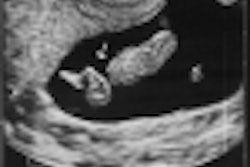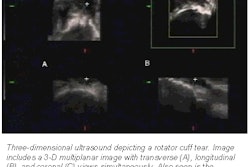In opposition to a study published by the Journal of the American Medical Association (JAMA), the June issue of the Journal of Ultrasound in Medicine (JUM) featured a counterpoint article that called second-trimester sonography (genetic sonogram) a valuable technology for identifying Down syndrome (DS). The exam diminishes the need for invasive procedures that could contribute to fetal losses, according to the journal.
The JUM article argued that the JAMA study unfairly "singled out the genetic sonogram as a potential cause of unnecessary pregnancy losses" and was "promoting a sense of unease...about the use of technology that [had been employed to] successfully rule out major fetal abnormalities...and to diminish the need for invasive procedures."
The JAMA study concluded that a genetic sonogram, used to detect markers such as a thickened nuchal fold, was not a practical screening test for DS and increases the possibility of amniocentesis-related fetal losses. The authors of the JUM article, however, asserted the value of the genetic sonogram, saying that "the most important outcome of using this screening paradigm is to diminish the possibility of DS, and...to reduce the number of invasive procedures that might be conducted."
According to the JAMA study, ultrasonic markers on a genetic sonogram cause undue anxiety for women. The JUM article, however, countered by saying that the absence of ultrasonic markers "validly reassured...more patients than it falsely concerned" and predicted that with "its continued use in conjunction with other screening tests, its positive effect on patients' psyche and fetal safety would be even greater in the future."
By AuntMinnie.com staff writersJune 13, 2001
Related Reading
Second-trimester ultrasonography impractical screening test for Down syndrome, February 28, 2001
Copyright © 2001 AuntMinnie.com



















